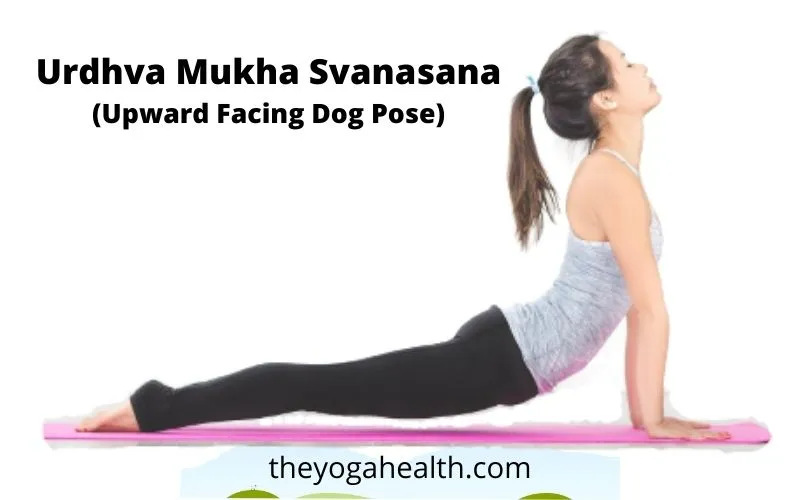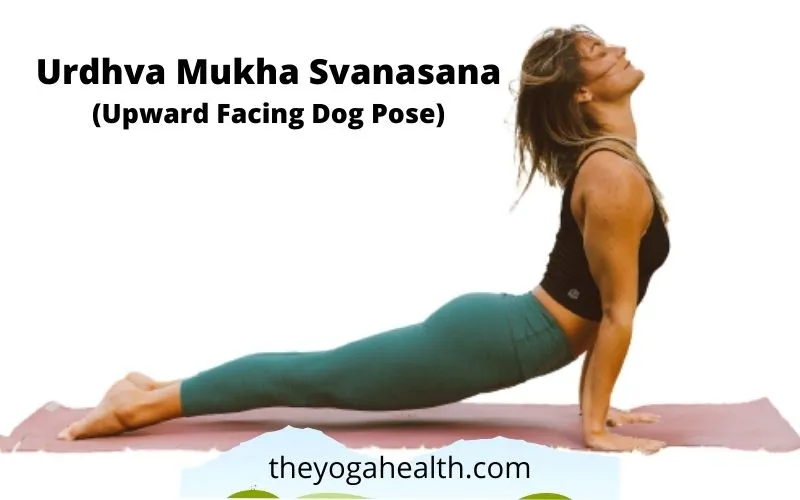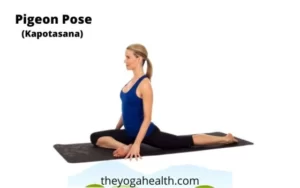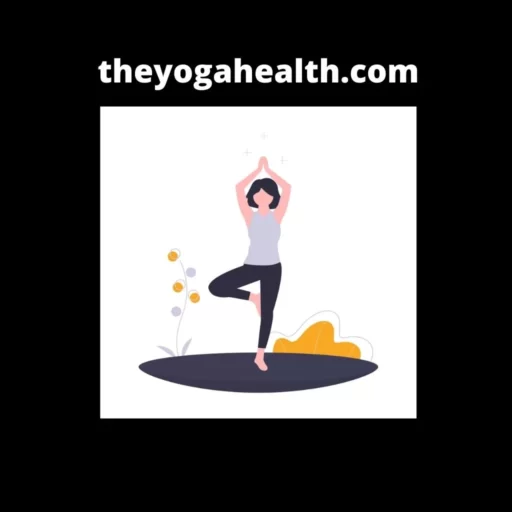In this article we will discuss how to do Urdhva Mukha Svanasana its benefits, contraindications, this asana is also known as Upward Facing Dog Pose. ‘Urdhva Mukha’ in the Sanskrit language means ‘having face upwards’ and ‘Svana’ means a ‘dog’. The pose resembles a stretching dog having its head up in the air, thus the name.
Table of Contents
What is Urdhva Mukha Svanasana
Urdhva Mukha Svanasana is also an important part of the Surya Namaskar. In this pose, the entire body weight comes on the palms and top of the feet. So the proper alignment of the wrists under the shoulders and pulling back of shoulder blades to open chest is very important.
Basic details:
| Sanskrit Name | Urdhva Mukha Svanasana |
| English Name | Upward Facing Dog Pose, Upward Dog, Dog Pose Yoga |
| Difficulty Level | Beginner |
| Position | Lying on your front |
Benefits following muscles:
- Abs
- Chest
- Neck
- Pelvic
- Biceps
- Triceps
- Arms
- Shoulders
- Lower Back
- Middle Back
- Gluteus

How to do Dog Pose
1. Lie down flat on your stomach on your yoga mat, keeping your face downwards.
2. Your feet be kept about a foot apart and your toes should point straight back.
3. Now Place your Palms on the floor by the sides of your waist. Your fingers should point towards your head.
4. Breath in and raise your head and upper body, stretch your arms completely and push your upper body and your head as far back as you can.
5. Your knees be off the floor in the air. Keep your legs straight and tight at the knees. Make sure not to rest your knees on the floor.
6. The weight of your body should only be on your palms and upper side of your feet.
7. Your thighs, calves, and spine should be fully stretched and keeping your buttocks tightly contracted.
8. Push your chest forward and fully stretched your neck and throw your head back as far as you can. The back portions of your arms should also be stretched fully.
9. You can hold this pose for about 30 seconds to a minute with deep breathing.
10. To come out of the pose, bend your elbows release the stretch, and relax on the floor.
Urdhva Mukha Svanasana Benefits:
1. Spine
This yoga pose work wonders for the spine, it stretches the upper body and the backward curve from the lower back stretches the entire spine. It helps in the lengthening and rejuvenation of the spine. This pose is especially recommended for people who suffer from a stiff back.
2. Slip Disc
This pose is very good for those suffering from prolapsed or slipped discs of the spine. The regular practice of this pose can cure any deformity in the spinal area.
3. Lumbago
People suffering from lumbago are benefitted.
4. Sciatica Pain
Helpful to people with Sciatica pains.
5. Backache
The spine is stretched deeply in this pose which helps in tightening the lower back muscles, thus reducing pain and stiffness around back muscles and curing backaches.
6. Asthma
In this pose chest is expended fully which improves the lung capacity and chest expansion. When a person can do deep breathing, it ensures a better flow of oxygen in the body to fight ailments like asthma and other respiratory tract disorders.
7. Blood Circulation
The pelvic region is kept healthy as blood circulates properly in that area. In this pose when lower parts of the body do not touch the floor, it tones and gives strength to the buttocks, hamstrings, calves, and legs.
8. Abdominal Organs
The deep stretch of the upper and lower body helps in toning and strengthening the abdominal muscles, which further stimulates the abdominal organs.
Contraindications:
- If the person is suffering from a slipped disc then it is always advisable to do this pose under the proper guidance of a trained Yoga teacher. If this pose is done incorrectly then it can even do more harm to the spine than its benefits.
- Those suffering from spondylitis can avoid this pose, cause the deep stretch of the upper back, neck, and head may not be good for patients with spondylitis.
- This pose requires some basic strength in the elbows and wrists and if the practitioner is having weak elbows and wrists then it can cause problems to them when they won’t be able to balance their bodyweight properly. So follow the advice of your Yoga teacher and go slow and steady to master this pose.
- Pregnant women after the first trimester of pregnancy can avoid doing this pose.
Modification Upward Facing Dog Pose:
When you start learning this pose and you find it difficult to lift your thighs off the ground then you can lower your thighs to the ground. Make sure that you make a habit of lifting your thighs off the floor as you grow in practice and gain strength. If thighs remain on the floor then you are doing the Cobra Pose (Bhujangasana) and not the Upward Facing Dog Pose (which is ok, but it is a different pose).
Cobra vs Upward Dog
In the realm of yoga, numerous poses offer unique benefits for the mind, body, and soul. Two such poses that are often compared are the Upward Facing Dog Pose and the Cobra Pose. These poses, although similar in appearance, have distinctive characteristics and advantages.
We will explore the differences between Upward Facing Dog Pose and Cobra Pose, and shed light on their individual benefits.
Upward Facing Dog Pose, also known as Urdhva Mukha Svanasana in Sanskrit, is a rejuvenating backbend that strengthens the upper body, opens the chest, and improves posture, strengthens the back and arms, stretches the chest and abdomen, elevates mood, increases energy.
Cobra Pose, or Bhujangasana in Sanskrit, is another potent backbend that offers various benefits for the body and mind. It strengthens the spine, opens the heart and lungs, tones the abdomen, relieves stress and fatigue, stimulates digestion.
Which Pose is Right for You?
Both Upward Facing Dog Pose and Cobra Pose offer a range of benefits and can be incorporated into your yoga practice based on your specific needs. If you’re looking to strengthen your upper body, improve posture, and elevate your mood, Upward Facing Dog Pose might be the ideal choice.
On the other hand, if you seek to enhance spine strength, open the chest, and stimulate digestion, Cobra Pose could be more suitable for you.
‘Cobra pose’ and ‘upward facing dog’ are two very common back bend yoga poses. In both of these yoga poses spine is stretched but still there are some fundamental differences between the two.
Cobra Pose and Upward dog pose looks quite similar but there is a difference between the two that every yoga practitioner must know. In the Cobra Pose, the entire lower body remains in touch with the ground, where groins area and thighs remain fully on the ground to make a deep backbend.
Difference between Cobra and Upward Dog
Cobra pose is easier than the Upward Facing Dog so it is good for the beginners and people who are facing problem of back pain.
Upward Facing Dog is difficult pose than the Cobra Pose so this pose is good for intermediate and advanced yoga practitioners.
Cobra pose is good for opening up of the chest and heart chakra and also helps in stress and anxiety disorders.
Upward Facing Dog is good for strengthening back muscles, shoulders and arms, also helpful in improving digestion.
In Upward Dog Pose, the lower body from the ankles to the hips remains above the floor in the air. The body weight in this pose remains on the upper part of the feet and the palms. So in this pose, the arms and the shoulder strength are put to test.
If you are new to the world of Yoga then it will be better that you start with Cobra pose before going full-fledged for Upward Facing Dog Pose (Urdhva Mukha Svanasana). Yoga practitioners who have a very strong back should go for Upward Facing Dog Pose than Cobra Pose. Upward Facing Dog Pose is more difficult and more beneficial for the practitioners than the Cobra Pose.
In conclusion, Upward Facing Dog Pose and Cobra Pose are two distinctive yoga postures with their own set of advantages. By understanding their differences and benefits, you can make an informed decision when incorporating them into your yoga routine.
Tips for both the poses
Keep your spine straight and long also ensure that your neck is in line with your spine. Your hands be firmly pressed on the Yoga mat and your shoulders should be back and down.
Your breathing should be even and deep throughout the pose. If you feel any pain during the pose then you must stop immediately and must do it under expert supervision.
Conclusion for Urdhva Mukha Svanasana:
Urdhva Mukha Svanasana works to a great extent for the strength of the spine, arms, and shoulders, it also boosts energy in the body, so it can also be included in flow yoga sequences. The regular practice of this pose will prepare the body for more intense yoga poses.
FAQ: Upward Facing Dog Pose
Q1. What is Upward dog?
Ans: Upward dog is another name of the Yoga pose. In the English language, its other name is Upward Facing Dog Pose in the Sanskrit language it is known as UrdhvaMukha Svanasana.
This pose resembles a stretching dog that’s why this name is given to this Yoga pose.
Q2. Muscles used in Upward facing dog?
Ans: Upward facing dog pose use following muscles: Abs, Chest, Neck, Pelvic, Biceps, Triceps, Arms, Shoulders, Lower Back, Middle Back, and Gluteus.
Q3. How to say Urdhva Mukha Svanasana?
Ans: It is pronounced as (OORD-vah Mook-ha shvan-AHS-ah-nuh)





